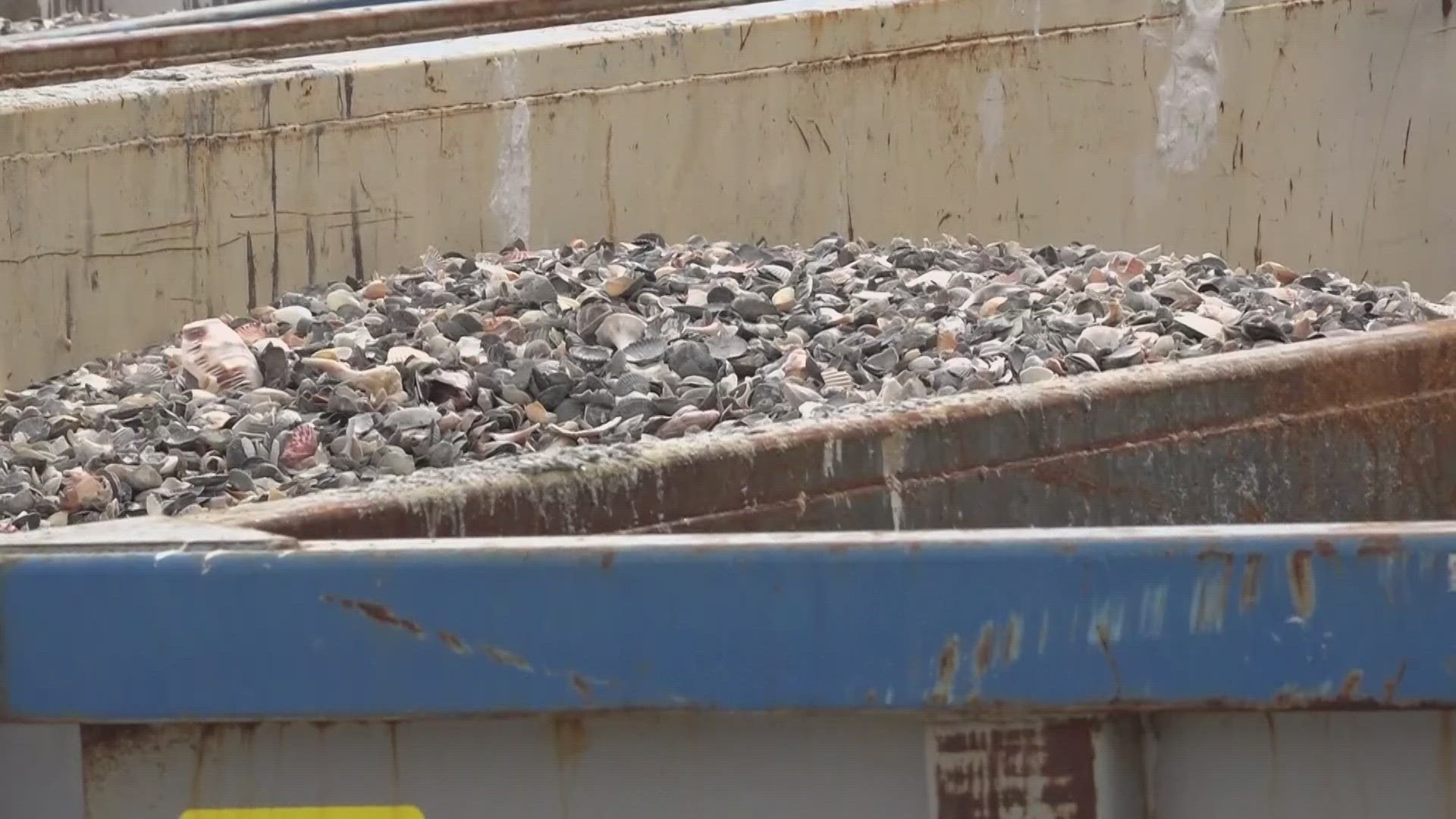VILANO BEACH, Fla. — Jason Harrah with the U.S. Army Corps of Engineers pointed to heavy equipment moving around Vilano Beach, explaining how the shore restoration project works.
He is the project Manager for the Vilano Beach restoration project. It's purpose is "to protect upon infrastructure (homes and buildings), loss of life (people), and major evacuation routes (Highway A1A)."
Harrah met me Tuesday at the project site to address questions about dumpsters full of shells from the project. Residents, such as Keith Eskew, told First Coast News they have found animals still alive in the those shells in the dumpsters in a parking lot in Vilano Beach.
Eskew said, "There’s got to be a better way."
The sand for this beach nourishment project comes from a location that is about seven miles offshore, and that’s where all the shells are coming from as well. A dredger essentially vacuums up the sand and contents from the ocean floor. It’s all piped onto the beach and then placed along the coastline.
Animals from the ocean floor are called benthic, and Harrah said a small percentage of live animals do indeed wind up in the dumpsters.
Harrah said, "We do a really thorough job out here on the job site to try to mitigate that before we get to a dumpster. Anything that may be found (alive) would be very minimal compared to the overall size of the dumpster. Typically it's broken shell that is ultimately taken and used and recycled for roadbase."
"In the event we see something visible that is crawling, we will certainly take whatever measures we could to remove that. However we are not going through the dumpsters looking for something that may be at the bottom," Harrah noted.
Harrah says environmental assessments take place before the project starts to determine environmental impacts, even to the ocean floor. That assessment is then reviewed by various state and federal agencies. Public input is also received.
He said the death of the ocean’s bottom-dwelling-critters is factored into the assessment. However, it considered minimal. He cites research that indicates those creatures "recolonized very quickly on the seafloor after the project is over, within a year."
The Florida Department of Environmental Protection permit for the project mandates that nothing bigger than three quarters of an inch be placed on the beach during shore restoration projects. Harrah said, the reasoning is to keep out glass, rocks, and other large items that could be obstacles for sea turtles when nesting and for their babies when crawling to the ocean.
Because the dumpsters now have NO TRESSPASSING signs around them, I asked to get close to them in order to see inside. I found the dumpsters empty. I was told they had been emptied earlier Tuesday morning… before my arrival.
Biologists and residents have asked if the shells – once shifted out from the sand – can be taken back to the water.
I asked Harrah that question as well. "There’s really no environmental lift to take empty shells and place those back into he wave break." He added, "But Jessica, we can certainly look into it, I mean we’ll look at that in the future. We’ll talk to the appropriate environmental agencies. If everyone involved with the federal and state (levels) think there’s some benefit to do that. And it's justifiable, we’ll certainly take a look at it."
Harrah ultimately said the loss of ocean floor creatures is an expected loss during beach nourishment projects. This question is now out there: Can something be done differently to lessen the loss? And that's because concerned people raised the question.

